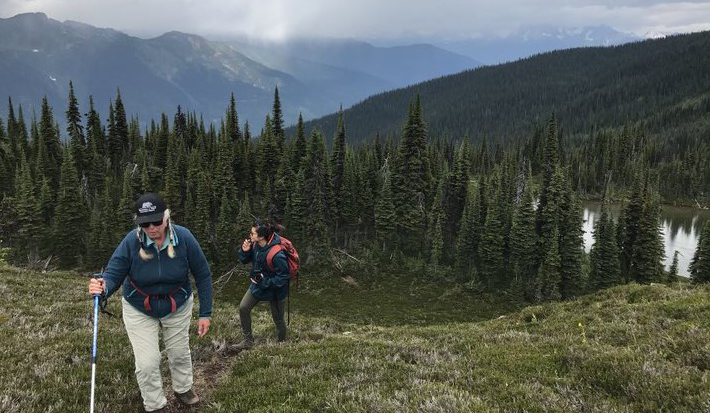For those experiencing internships around the world, things have looked a little — or a lot — different in 2020. But this hasn’t stopped Y2Y’s summer interns from putting their all into their work with us over the past several months. We couldn’t be more excited to have them on-board!
If you are wondering about what our summer interns have been up to this year, and what a future opportunity with Y2Y could look like, keep reading and get to know each of them a bit better.
Y2Y’s job page is usually updated with new internship and summer opportunities starting in April. So, if you are eager to dig in deep to conservation work with our hard-working teams from Yellowstone to Yukon, keep an eye out in the spring!
Meet our summer 2020 interns
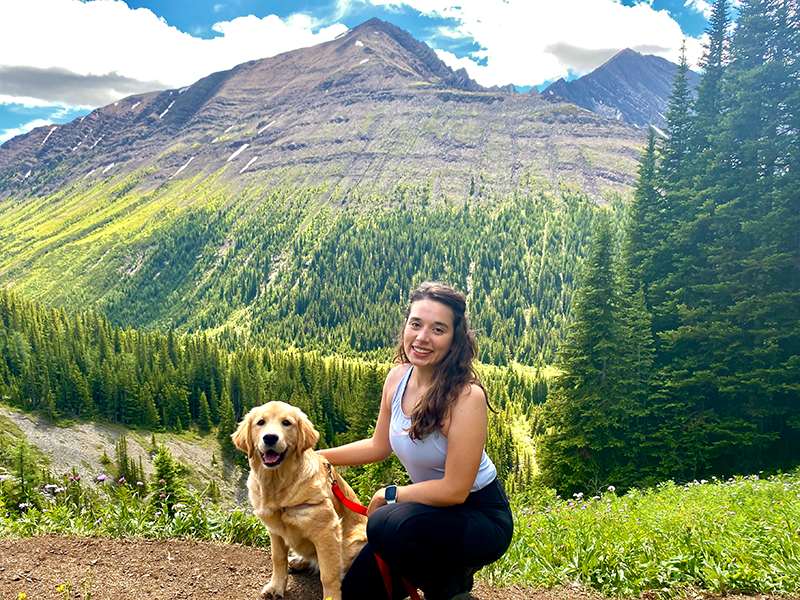
I am on the recreation ecology team, working with Dr. Aerin Jacob, Y2Y’s conservation scientist and Dr. Karine Pigeon, UNBC-Y2Y’s post-doctoral fellow. I am working to organize and obtain new spatial data useful for mapping of recreation trails in Kananaskis-Ghost and Upper Columbia regions.
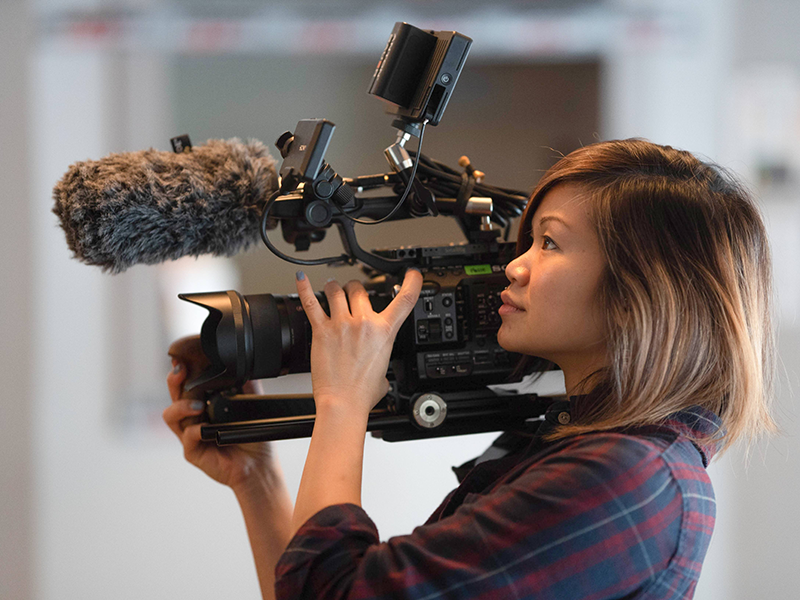
My name is Lynn and I am interning with the communications and B.C. team at Y2Y, as their videography and digital storytelling intern. I am working on a short video series that will educate people on the importance of wildlife habitat connectivity specific to the Upper Columbia region.
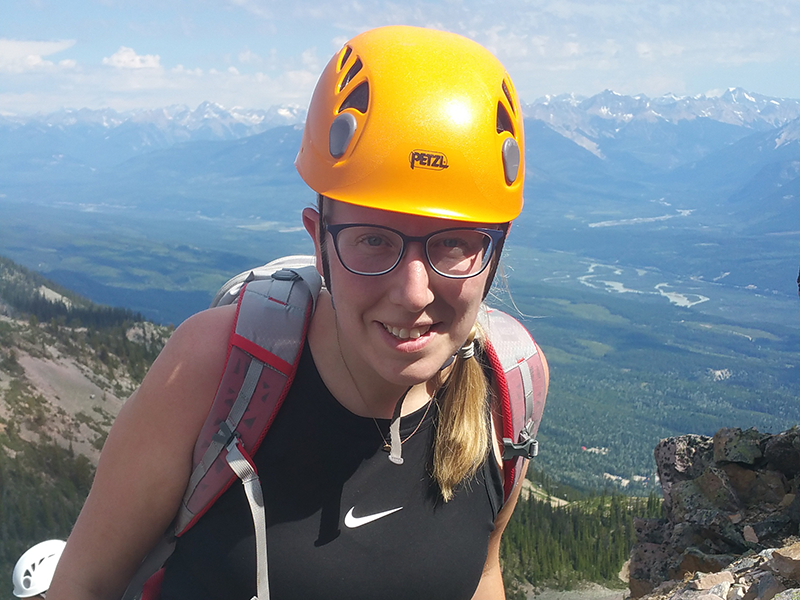
My name is Kari Van Ruskenveld, and I am the recreation ecology conservation science intern, working with Dr. Karine Pigeon and Dr. Pam Wright from the University of Northern British Columbia. I have been working on digitizing recreation trails in geographic information system (GIS), compiling resources on spatial information on trails, and reviewing information on habitat models for key wildlife species.
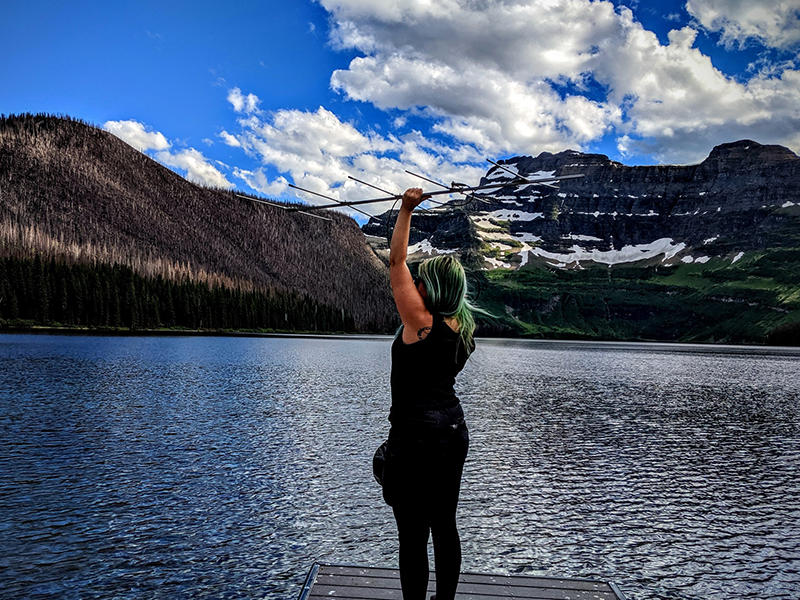
I have been working with academics and human-wildlife conflict experts to develop a tool for mapping grizzly bear habitat security in Alberta’s Bow Valley. By identifying high quality habitat that is insecure for bears due to high human use, we can guide human management efforts in the valley to decrease human-wildlife interactions that may have bad outcomes for both people and bears.
How does your schooling, experience, or interests connect to Y2Y’s vision and mission?
Silvia: My strong interests about wildlife and the environment drove me to pursue studies in zoology, environmental science, and geography. I have always believed that humans can coexist in harmony with nature, and we can use science to find the best ways of doing so.
Lynn: I love that Y2Y’s vision and mission are about collaborative action and the connection between not only humans and wildlife, but also between different habitats and landscapes. Helping nature thrive is no easy feat, and cannot be achieved alone. From my experience at school, working in events and media, I’ve learned that big projects always take the combined efforts of passionate individuals, and that this is what builds community. By coming together in joint efforts, lasting relationships are built and people become committed to caring for each other and the place they live.
Kari: As both a student of conservation science and a recreationist in the Yellowstone-to-Yukon region, connecting people to nature in a way that both can thrive is important for this generation and those to come. I believe it’s important to foster this relationship through habitat protection, public outreach and education, and looking into the dots that connect recreation to the habitat.
Jessica: Though I am very passionate about wildlife and land conservation, I have a background in environmental science. I first heard about Y2Y while attending the University of Calgary. I was very inspired by Y2Y’s mission and working with the organization became one of my goals. Y2Y’s mission to connect and protect habitat so both people and nature can thrive really resonates with me. Protecting the Yellowstone-to-Yukon region is essential for various conservation reasons, but it also protects drinking water — a vital resource for people, too. The overlap between protecting nature and the resulting, lasting positive effects for humanity is, in my opinion, extremely important for the conservation movement.
What are you most excited to learn, or have learned from your time with Y2Y?
Silvia: During my time at Y2Y, I have been very interested in learning more about how Y2Y operates and how it uses science to have a positive impact for wildlife and conservation.
Lynn: I am excited to gain more in-depth knowledge about the Upper Columbia region that I care for and love. I have lived in and explored this landscape for seven years and am grateful for the opportunity to learn more about how to help the wildlife here and continue to explore it responsibly. So far, I was able to join the B.C. team in exploring and filming remote areas north of Revelstoke. As part of the trip, it was really inspiring to see some work that the Yucwmenlúcwu (Caretakers of the Land) (Splatsin Development Corporation) are doing to restore habitat for the Columbia North caribou herd, on an 11.5-kilometer stretch of road near Revelstoke. I’m excited to learn other innovative ways groups are coming together to restore wildlife populations.
Kari: I was excited to learn more in terms of GIS skills and gain more hands-on experience.
Jessica: Learning more about grizzly bears and how human management decisions are made in the Bow Valley has been very interesting. I was also excited to gain a better understanding on how Y2Y runs internally as a not-for-profit and how they establish and manage relationships with so many different stakeholders.
If you could go anywhere in the Yellowstone-to-Yukon region, where would you go and why?
Silvia: I would love to go to Yellowstone National Park to see the Grand Prismatic spring, and admire those naturally occurring bright colors.
Lynn: I have never been to Yukon and would love to witness the next-level wilderness that is there. I’d love to explore the rugged peaks of Tombstone Territorial Park and learn about the First Nations culture of the Tr’ondëk Hwëch’in.
Kari: I have always wanted to do a horseback trip through the Muskwa-Kechika region. It’s such a diverse wilderness area with high cultural significance, and I would love to visit someday.
Jessica: I have been to Yellowstone National Park and would love to go again! I would also like to visit the Greater Mackenzie Mountains in Yukon. I have not been to any of the territories and would love to explore the beautiful landscape and observe caribou, as I studied them for my Master’s but have yet to see one!
What animal do you think best matches your personality?
Silvia: A dog matches my personality because they are very friendly with other people and animals, they are curious, happy, loyal, and enjoy being part of a community.
Lynn: A swallow bird. I often watch them in-flight both independently, and with big groups of other swallows. It reminds me of how I love my alone time, but also love to come together with others in community. They are little, but are fast flyers that cover a lot of ground, like myself! They have also historically been a symbol for sailors to show they have travelled great distances. Their curious and exploratory nature of air, land, and sea matches my own travel-loving spirit.
Kari: Hmm…let’s go with an owl (quiet, observant, works better at night)
Jessica: I’ll go with capybara because they are unique, and I too am happy to make friends and help in any way I can.
